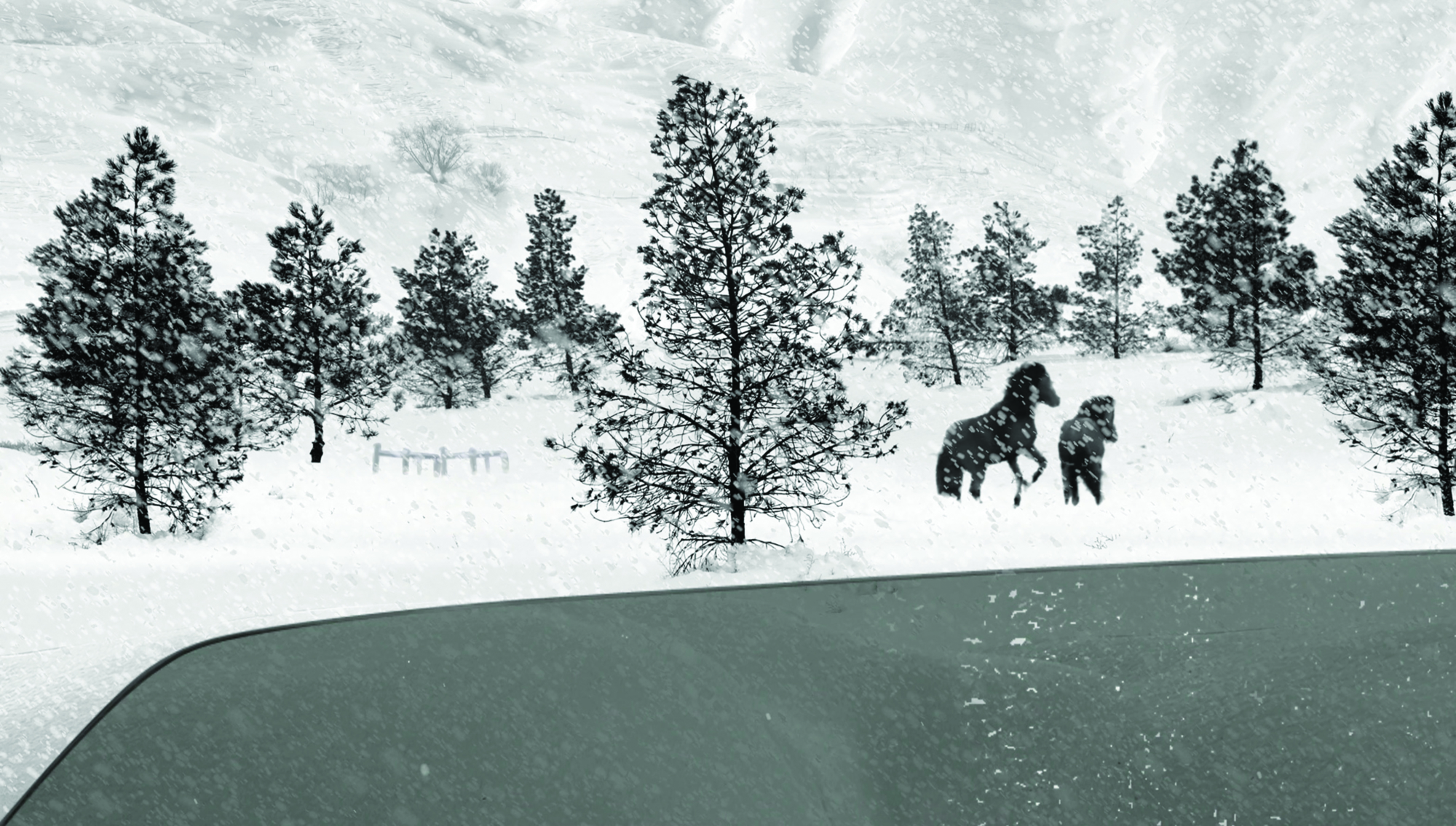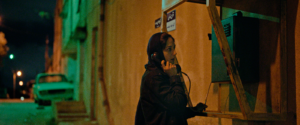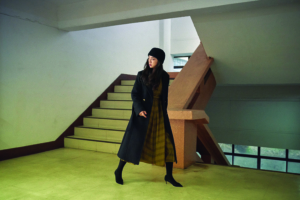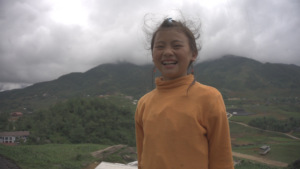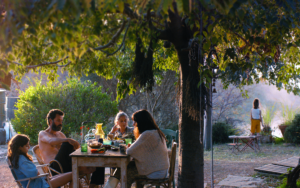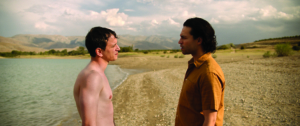It’s always tempting to read the last work of an artist as a cap on their career, a final summation of the obsessions and interests that have marked their oeuvre. That temptation is only heightened when the artist is of such stature and significance as Iranian filmmaker Abbas Kiarostami, who died in July 2016.
Kiarostami emerged into the international spotlight in the 1980s and 1990s, after a career as a maker of educational short films in Iran, with a series of warmly humanist features that played on the slippage between film and documentary, reality and fiction. His Koker trilogy – consisting of Where Is the Friend’s Home? (1987), Life, and Nothing More … (1992) and Through the Olive Trees (1994) – makes for a dizzyingly metafictional sequence. In the first, a young boy searches for the home of a classmate in order to return his notebook; in the second, a man portraying the unnamed director of the first film (played by Farhad Kheradmand) searches for that film’s child performers in the wake of an earthquake that devastated northern Iran (based on a real trip Kiarostami took[1]Tina Hassannia, ‘Life, and Nothing More… | Abbas Kiarostami’, In Review Online, 5 September 2011, <http://inreviewonline.com/2011/09/05/life-and-nothing-more/>, accessed 13 May 2018. ); while the third presents as a behind-the-scenes look at the making of the second, with a new unnamed director (actor Mohamad Ali Keshavarz) overseeing the shoot and directing Kheradmand in his performance. This sort of metatextual riffing on the figure of the film director became a recurring element of Kiarostami’s work: 1990’s Close–Up is a piece of docufiction about a man who impersonates Iranian filmmaker Mohsen Makhmalbaf in order to con a family into financing a film; the family, the conman and Makhmalbaf all play themselves.
Kiarostami’s 24 Frames, which premiered posthumously at the 2017 Cannes Film Festival, is a characteristically slippery text, especially when attempting to evaluate it as the director’s last work. The project was worked on by Kiarostami for three years, but only completed after his death, by his son Ahmad[2]Thomas Page, ‘24 Frames: Iran’s Abbas Kiarostami Flourishes After Death with Final Film’, CNN, 25 May 2017, <https://edition.cnn.com/style/article/abbas-kiarostami-24-frames/index.html>, accessed 13 May 2018. – a situation that has, for some anxious cinephiles, put a spin of uncertainty on the film’s final authorship. The slipperiness is heightened by the format of the text itself: is it really a film, or is it something more like a gallery installation, as some exhibitors had suggested when Kiarostami screened the work-inprogress?[3]‘24 Frames Q&A | Ahmad Kiarostami & Godfrey Cheshire’, YouTube, 7 February 2018, <https://www.youtube.com/watch?v=mZIsVjDGjHY>, accessed 13 May 2018.
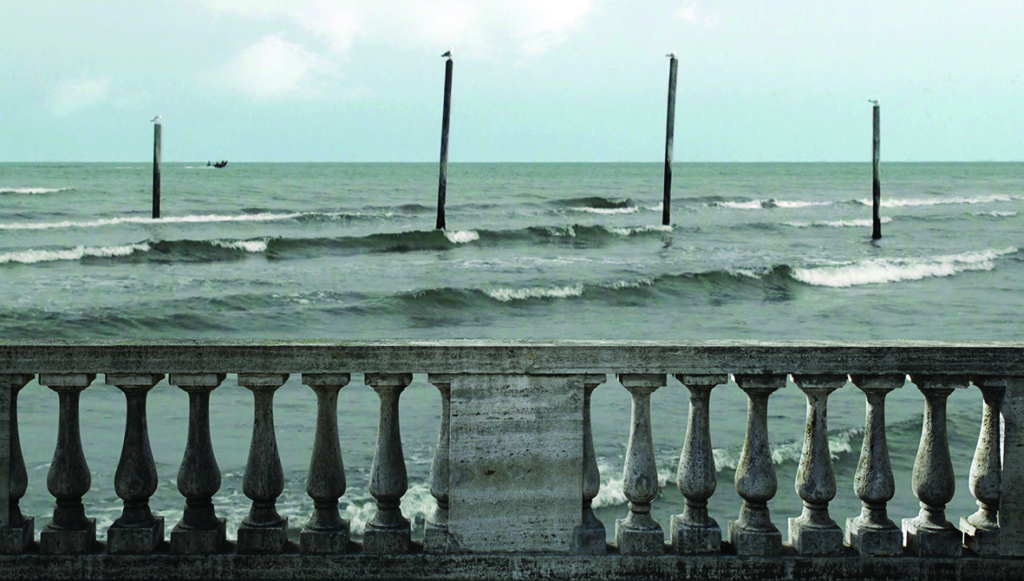
24 Frames is, as per its title, a sequence of twenty-four images – one painting, and twenty-three photographs taken by the director – each of which appears on screen for four-and-a-half minutes. The project was inspired by Kiarostami’s curiosity about the moments before and after a photograph is taken; each ‘frame’ has been carefully animated so as to breathe life into the elements of the original picture. The first image is Pieter Bruegel the Elder’s 1565 painting The Hunters in the Snow, held still on screen for some moments; soon, smoke begins to rise from a chimney within, snow falls, cows shuffle around and the sound of wind is heard. This demonstration serves as proof of concept for the twenty-three scenes to come.
Kiarostami’s photographs are varied in subject, but wild animals and rural settings recur predominantly (though a few scenes are domestic and/or populated with people), and the mood is, inevitably, still and contemplative. In the second frame, a cow lies resting on a beach, until a herd passes through the scene. In the fifteenth frame, six people stare from a bridge at the Eiffel Tower while night falls. In the twelfth frame, pigeons play in shadow behind a window blind while ‘Ave Maria’ plays somewhere on a stereo. In the tenth frame, sheep huddle through a blizzard, protected by a roving dog. The animated elements appear to veer considerably in their veracity. Some of the animals’ movements are herky-jerky, suggesting the artifice of computer animation (Kiarostami worked closely with visual effects supervisor Ali Kamali on the project), while others are astonishingly natural (animal wranglers are credited on the project, and Kiarostami incorporated green screen and stock footage).
The film presents as an interrogation of the ontology of the still image, and, as with many Kiarostami projects, the border between art and the ‘reality’ that brackets it fades into indistinction. Where, after all, is the ‘original’ photograph in each of these short films? And when, in their four-and-a-half minutes, is the instant it begins and ends? The questions themselves are deceptive, since, as Ahmad has revealed, some of the frames have no originating photograph, but are assembled from elements taken from multiple pictures.[4]ibid. This state of ‘undecidability’, or the ‘inseparability of different possibilities’,[5]See Rex Butler, ‘Abbas Kiarostami: The Shock of the Real’, Angelaki, vol. 17, no. 4, 2012, pp. 61–76. is a key element of Kiarostami’s art. As much as his work engages with substantive questions of class, politics, morality and human existence, he is also a definite trickster. Even the credits of 24 Frames are deceptive – Ahmad has said that only about four people really worked on the film, and that many of the crew names listed at the end are actually Farsi puns.[6]‘24 Frames Q&A’, op. cit.
The film presents as an interrogation of the ontology of the still image, and, as with many Kiarostami projects, the border between art and the ‘reality’ that brackets it fades into indistinction.
The question of the extent of Kiarostami’s involvement in the final product is, at least, partially resolvable. In a filmed interview with critic Godfrey Cheshire at a screening of the film in New York, Ahmad describes his contribution as a matter of weaning down the thirty frames Kiarostami was still working on just prior to his death, altering some to fix or conceal technical issues, cutting some down to length, and introducing one song selection (Maria Callas’ rendition of ‘Un bel dì vedremo’) to compensate for a copyright issue. In Ahmad’s telling, Kiarostami and Kamali sometimes worked on the film, on a home computer, for ten to fourteen hours each day, and each element was carefully selected and ‘directed’ by the filmmaker: ‘nothing is random’.[7]ibid.
The extended duration of the shots in 24 Frames encourages the audience to pass beyond a simple appreciation of their aesthetic organisation (and they are frequently simply beautiful) and to begin a deeper interrogation of their content – but rarely to decisive effect. Ahmad has suggested that at least some portions of the film carried personal significance for Kiarostami himself. The thirteenth frame, in which a seagull is shot by an unseen hunter, is said to be a tribute to a female friend of Kiarostami’s who died in a car accident[8]Page, op. cit. – an acknowledgement that the rhythms of everyday life reassert themselves in the wake of tragedy. But, absent that sort of private insight into the filmmaker’s mind, the action in most of the shots is so simple – horses frolicking, deer grazing, birds flocking – and so persuasively ‘natural’ (even when obviously artificial) that any significance found in their narrative movements, such as they are, seems liable to be a fantasy introduced to the material by the viewer.
Kiarostami’s work is often said to have a kind of pedagogical bent; he began his career as a filmmaker with Iran’s Institute for the Intellectual Development of Children and Young Adults, making instructional films for young viewers. But the process of gleaning clear meaning from his works, much less identifiable ‘lessons’, is by no means straightforward. In Where Is the Friend’s Home? – the first of Kiarostami’s features to be internationally recognised – the concluding moral is unclear, even suspect: the young boy never locates his friend’s home and, finding each adult he encounters to be singularly unhelpful, must return to his house and complete his classmate’s homework himself. The lesson, if there is one, seems to be that deception is a necessary tool for living (actually a very Kiarostami sentiment, given his career-long interest in complicating the division between real and fake).
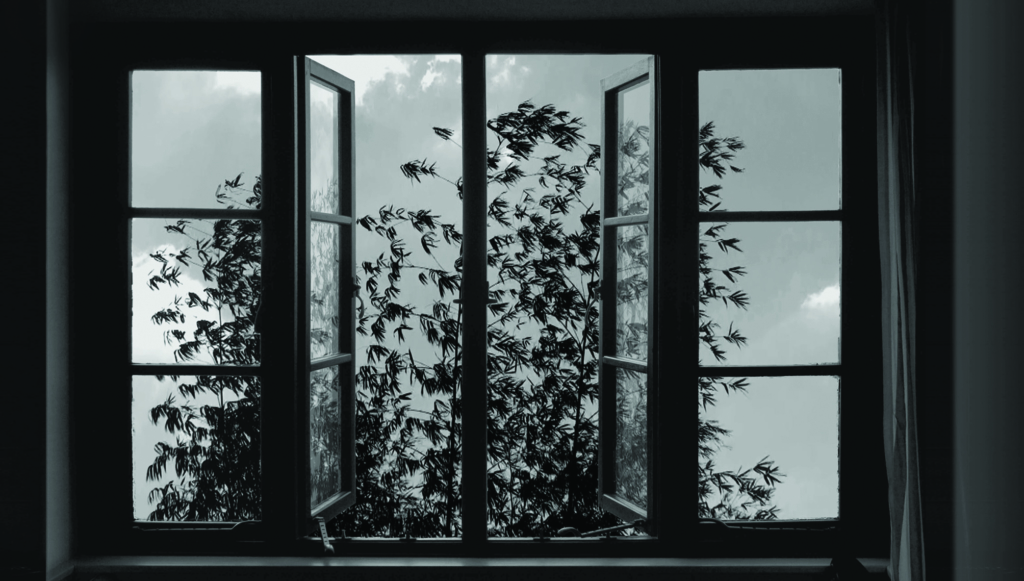
Overt meaning within 24 Frames never really jumps up to the level of the text, with the possible exception of the final frame. But there is plenty to ponder along the way in the artfully contrived randomness of its subjects’ activities. Do, for instance, the recurring depictions of herd behaviour – and the sometimes-deadly consequences for those that stray beyond the safety of numbers – suggest a discourse on the nature of social conformity? For this film, as for any of Kiarostami’s work, the process of sorting through the images, working out what they are concealing as well as revealing, and navigating their ‘undecidable’ aspects is an essential task for the viewer.
Scholar Adrian Martin has suggested that Kiarostami’s films are composed of a kind of ‘tension’ or a ‘subtle trembling’ – which is perhaps a consequence of their ontological uncertainty. He argues that Kiarostami’s work always builds to ‘an apparition, a vision’: ‘What we see in those moments, those final shots, is never quite what we expected to see, and it suspends what we may have thought to see resolved’.[9]Adrian Martin, ‘Abbas Kiarostami: The Earth Trembles’, 16:9, vol. 2, no. 5, February 2004, <http://www.16-9.dk/2004-02/side11_inenglish.htm>, accessed 13 May 2018, emphasis in original.
Obviating any suggestion that 24 Frames is not really a film, that it could be an installation or exhibition, screened in any order in any setting, an epiphanic moment does arrive – on cue – with the twenty-fourth frame. The image appears as the interior of a room, our view oriented towards a window looking out onto a night-time landscape of trees in mist. In front of the window is a desk with an Apple computer and a young woman asleep, resting her head by the keyboard. The computer displays what appears to be video-editing software, showing a clip from William Wyler’s The Best Years of Our Lives (1946) in which Fred (Dana Andrews) kisses Peggy (Teresa Wright). The footage plays in slow motion, stepping frame by frame, the actors entering into their embrace with exquisite mechanical patience, while the woman in front of them stirs gently. The soundtrack – not native to the clip shown – is Welsh singer Katherine Jenkins’ rendition of Andrew Lloyd Webber’s ‘Love Never Dies’, the titular song from the ill-fated sequel to the musical The Phantom of the Opera.
The image is wonderfully, surprisingly moving, almost ostentatiously so – here, Kiarostami is offering his audience, after a demanding and attention-sapping hundred or so minutes, an old-fashioned Hollywood ending, sealed with a kiss. The kitschy choice of song suggests a layer of irony, but the subdued, monochromatic tone of the shot and the camera’s kindly regard for the sleeping woman, along with our sense that the image has been balanced so as not to intrude on its subject or force her onto the viewer, strip away its sentimentality (while the song’s message itself has undoubtedly gained added resonance in the wake of Kiarostami’s death). Critics have posited a coded political undertone, too: in depicting, as Deborah Young puts it, ‘an unveiled woman, men and women kissing, and a woman singing solo’, the shot ‘breaks three [Iranian] censorship taboos’.[10]Deborah Young, ‘24 Frames: Film Review | Cannes 2017’, The Hollywood Reporter, 23 May 2017, <http://www.hollywoodreporter.com/review/24-frames-review-1006651>, accessed 13 May 2018. Yet the scene as a whole is so mild as to seemingly render any ideological objection absurd.
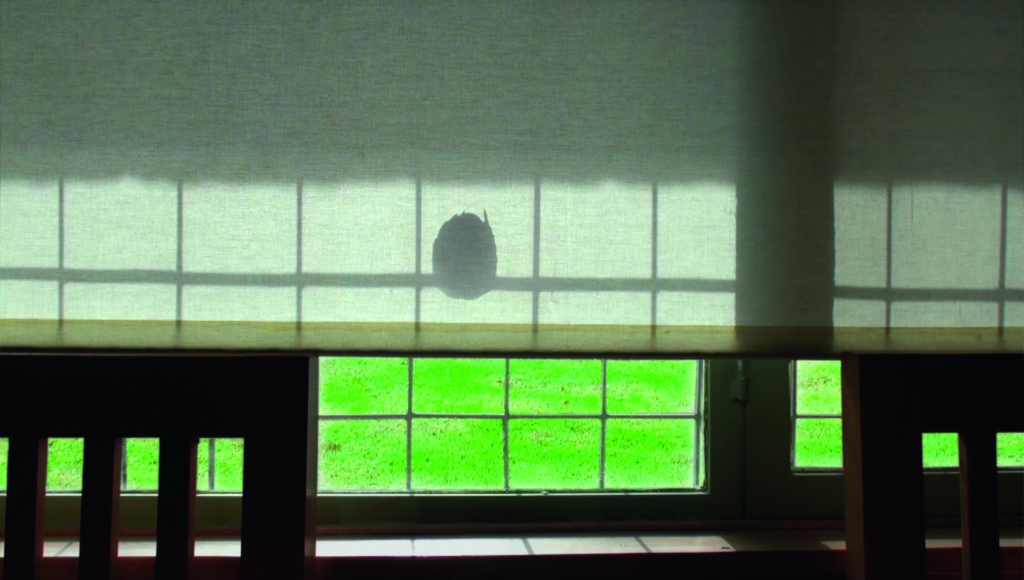
On another level, though, the image suggests a diagram of the essentially deceptive structure of cinema: the raw footage, a series of frames strung together to conjure the illusion of movement and manipulated through editing; the soundtrack, a separate creation artificially layered over the photography; and the artist, who brings these elements together into unitary effect. But the artist here is asleep, and the images are not really her own; the creation of cinema is proceeding without her conscious attention, has already been proceeding.
Kiarostami himself has been an ‘undecidable’ presence throughout his work: paradoxically revealing himself through stand-ins, cutting through his fiction with doses of reality and dosing his reality with fiction. Perhaps this image of the half-aware, half-present artist can be taken as a final gesture from Kiarostami in a career that toyed repeatedly with the position of the director relative to the film text. Here, for the last time, the filmmaker slips again behind the image, between the frames, and retreats out of sight.
Endnotes
| 1 | Tina Hassannia, ‘Life, and Nothing More… | Abbas Kiarostami’, In Review Online, 5 September 2011, <http://inreviewonline.com/2011/09/05/life-and-nothing-more/>, accessed 13 May 2018. |
|---|---|
| 2 | Thomas Page, ‘24 Frames: Iran’s Abbas Kiarostami Flourishes After Death with Final Film’, CNN, 25 May 2017, <https://edition.cnn.com/style/article/abbas-kiarostami-24-frames/index.html>, accessed 13 May 2018. |
| 3 | ‘24 Frames Q&A | Ahmad Kiarostami & Godfrey Cheshire’, YouTube, 7 February 2018, <https://www.youtube.com/watch?v=mZIsVjDGjHY>, accessed 13 May 2018. |
| 4 | ibid. |
| 5 | See Rex Butler, ‘Abbas Kiarostami: The Shock of the Real’, Angelaki, vol. 17, no. 4, 2012, pp. 61–76. |
| 6 | ‘24 Frames Q&A’, op. cit. |
| 7 | ibid. |
| 8 | Page, op. cit. |
| 9 | Adrian Martin, ‘Abbas Kiarostami: The Earth Trembles’, 16:9, vol. 2, no. 5, February 2004, <http://www.16-9.dk/2004-02/side11_inenglish.htm>, accessed 13 May 2018, emphasis in original. |
| 10 | Deborah Young, ‘24 Frames: Film Review | Cannes 2017’, The Hollywood Reporter, 23 May 2017, <http://www.hollywoodreporter.com/review/24-frames-review-1006651>, accessed 13 May 2018. |
